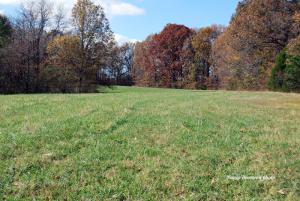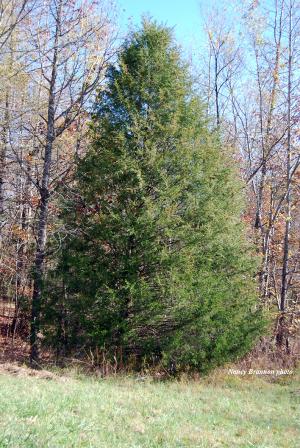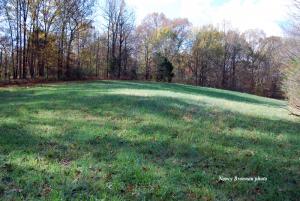By Nancy Brannon
Cooler fall temperatures and seasonal rain are the preferred conditions for greening your pastures for winter forage. While most folks stock up on hay in late summer and early fall for their horses’ winter forage, some cool season grasses in your pasture can provide succulent grazing, while you reserve your hay for times when the horses cannot be out in pasture.
Gary Bates, Associate Professor in the University of Tennessee Plant and Soil Science department, has a publication on “Pastures for Horses” that covers both cool season and warm season grasses appropriate for horses. Bates writes: “High-quality pastures can provide much of the feed needed by horses, while providing the most natural and healthy environment for exercise and rest. For most classes of horses, a well-managed pasture can provide all of the nutrients needed by the animal.”
In the mid-south area, cool season perennials include fescue, orchardgrass, timothy, and Kentucky bluegrass. Pastures can be over seeded with annuals such as ryegrass.
Bates explains: “Tall fescue is the predominant grass used in Tennessee pastures. It is a persistent, good-quality forage for horses, and has the longest growing season of any of the forages that can be grown. The most common variety of tall fescue is Kentucky 31.”
The caution about Kentucky 31 is that “in the late 1970s it was discovered that KY-31 can contain a fungal endophyte called Neotyphodium coenophialum. This endophyte grows between the cells inside the plant, and cannot be seen externally. This endophyte fungus causes mares to have reproductive problems,” Bates explains. But mares (in reproduction) are the only class of horse with any difficulties related to the endophyte. Growing horses or adult horses have shown no production problems when grazing infected tall fescue.
“Endophyte-free tall fescue, orchardgrass, and timothy can all be used for pasture,” Bates writes. He stipulates “that every acre used for pasture does not have to have the same forage species growing on it. The best forage producers want to provide grazing for their horses as much of the year as possible. The best way to do this is to use both cool-season and warm-season plants.” But “the majority of acres should be seeded to a cool-season perennial grass, most likely tall fescue.”
Some small grains that you might consider for winter pasture are rye, oats, or wheat. See more recommendations at UT’s Tennessee Forage Guide at: http://utbfc.utk.edu/Forage-Forage%20Species-Guide.html.
Then after the base grasses are planted, legumes should be added to the pastures. I have noticed that the cool weather and rain have resulted in the re-emergence of clover in my pastures. If you watch your horses graze, or closely inspect your pastures to see what grasses have been bitten off short, you will see what their grazing preferences are.
A number of years ago we planted Austrian winter peas in one of our fields and they were quite successful. In fact, the “Grow Journey” website touts them for human consumption, too, noting that the tender young growth tips taste like sweet sugar snap peas, but have the texture of lettuce. Their greens are high in protein and micronutrients. But – warning – when we mowed that field in the spring, one had to wear protective gear as if one were on a SWAT team or going into combat, because the peas were flying everywhere!
I have noticed that, in the early spring, my horses have a preference for annual bluegrass (Poa annua). A number of university agriculture departments, as well as lawn and golf course maintenance companies consider it a pest/weed. But our horses consider it very tasty forage! Pay attention to what your horses graze in the pasture to ascertain their taste preferences.
Read the full document, “Pastures for Horses,” at: https://extension.tennessee.edu/washington/Documents/pasture%20for%20horses.pdf
Cooler fall temperatures and seasonal rain are the preferred conditions for greening your pastures for winter forage. While most folks stock up on hay in late summer and early fall for their horses’ winter forage, some cool season grasses in your pasture can provide succulent grazing, while you reserve your hay for times when the horses cannot be out in pasture.
Gary Bates, Associate Professor in the University of Tennessee Plant and Soil Science department, has a publication on “Pastures for Horses” that covers both cool season and warm season grasses appropriate for horses. Bates writes: “High-quality pastures can provide much of the feed needed by horses, while providing the most natural and healthy environment for exercise and rest. For most classes of horses, a well-managed pasture can provide all of the nutrients needed by the animal.”
In the mid-south area, cool season perennials include fescue, orchardgrass, timothy, and Kentucky bluegrass. Pastures can be over seeded with annuals such as ryegrass.
Bates explains: “Tall fescue is the predominant grass used in Tennessee pastures. It is a persistent, good-quality forage for horses, and has the longest growing season of any of the forages that can be grown. The most common variety of tall fescue is Kentucky 31.”
The caution about Kentucky 31 is that “in the late 1970s it was discovered that KY-31 can contain a fungal endophyte called Neotyphodium coenophialum. This endophyte grows between the cells inside the plant, and cannot be seen externally. This endophyte fungus causes mares to have reproductive problems,” Bates explains. But mares (in reproduction) are the only class of horse with any difficulties related to the endophyte. Growing horses or adult horses have shown no production problems when grazing infected tall fescue.
“Endophyte-free tall fescue, orchardgrass, and timothy can all be used for pasture,” Bates writes. He stipulates “that every acre used for pasture does not have to have the same forage species growing on it. The best forage producers want to provide grazing for their horses as much of the year as possible. The best way to do this is to use both cool-season and warm-season plants.” But “the majority of acres should be seeded to a cool-season perennial grass, most likely tall fescue.”
Some small grains that you might consider for winter pasture are rye, oats, or wheat. See more recommendations at UT’s Tennessee Forage Guide at: http://utbfc.utk.edu/Forage-Forage%20Species-Guide.html.
Then after the base grasses are planted, legumes should be added to the pastures. I have noticed that the cool weather and rain have resulted in the re-emergence of clover in my pastures. If you watch your horses graze, or closely inspect your pastures to see what grasses have been bitten off short, you will see what their grazing preferences are.
A number of years ago we planted Austrian winter peas in one of our fields and they were quite successful. In fact, the “Grow Journey” website touts them for human consumption, too, noting that the tender young growth tips taste like sweet sugar snap peas, but have the texture of lettuce. Their greens are high in protein and micronutrients. But – warning – when we mowed that field in the spring, one had to wear protective gear as if one were on a SWAT team or going into combat, because the peas were flying everywhere!
I have noticed that, in the early spring, my horses have a preference for annual bluegrass (Poa annua). A number of university agriculture departments, as well as lawn and golf course maintenance companies consider it a pest/weed. But our horses consider it very tasty forage! Pay attention to what your horses graze in the pasture to ascertain their taste preferences.
Read the full document, “Pastures for Horses,” at: https://extension.tennessee.edu/washington/Documents/pasture%20for%20horses.pdf







![Paso Fino Pleasure_Amateur Owner [Class 650]](https://midsouthhorsereview.com/old website/admin/files/news_7571_small_bJaEKlV8.jpg)




